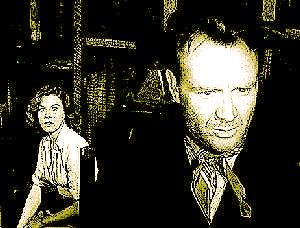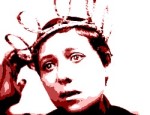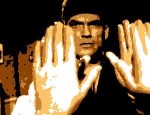Film Review

The Long Memory is typical of the run-of-the-mill British film noir of its era. The film is interesting because it features John Mills, a popular actor at the time, in very atypical role, the unkempt anti-hero. Mills was far better known as the genial heroic character, the kind of well-presented, well-spoken lad that every father in the land would like as a son-in-law. Here, Mills portrays a much darker and introspective character than he had played previously, someone of dubious morality and who might even be prepared to kill a woman. That Mills makes the character so convincing and, at times, frighteningly chilling, is testament to his skill as an actor. The film was directed by Robert Hamer, who had recently made It Always Rains on Sunday (1947) and Kind Hearts and Coronets (1949), two all-time classics of British cinema.
The film is marginally let down by its modest production values, lethargic pacing and some disappointing contributions from the supporting cast, but it is still a highly atmospheric piece that perfectly evokes the penury and weariness of post-war Britain. The confined living quarters, the dingy back streets and barren Kent coastal landscape all conjure up a world of desolation and despair that has lost its moral and social purpose. It can be argued that this grimly realistic setting makes a far more effective backdrop for a film noir than the stark expressionistic locations seen in equivalent Hollywood productions. The final, stunningly photographed sequence on the Kentish Marshes is one of the most haunting of any British film, the downbeat happy ending almost crushed by the nihilistic bleakness of the setting.
© James Travers 2009
The above content is owned by frenchfilms.org and must not be copied.
Film Synopsis
Recently released from prison, Phillip Davidson finds sanctuary on an abandoned barge on the Kent Marshes. He has spent the last twelve years in prison for a crime of which he is innocent, and now, an embittered middle-aged man, he is bent on revenge. He recalls how it all began, when he asked Captain Driver for his consent to marry his daughter, Fay. How could he have known that Driver was mixed up with dangerous criminals involved in the people trafficking racket? Davidson remembers that fateful night vividly, when Driver's boat caught fire after a brawl. Of course, he was the obvious scapegoat when a charred dead body was found on the boat. Neither Fay nor her father came forward to clear his name. And for that he had spent the best years of his life behind bars. Now, at last, the time has come for him to settle the score...© James Travers
The above content is owned by frenchfilms.org and must not be copied.
Similar Films
Here are some other films you may enjoy watching:- La Rupture (1970)
- The Fallen Idol (1948)
- The Spy Who Came in from the Cold (1965)
- The Locket (1946)
- Possessed (1947)
Other related links:
Film Credits
- Director: Robert Hamer
- Script: Howard Clewes (novel), Robert Hamer, Frank Harvey
- Cinematographer: Harry Waxman
- Music: William Alwyn
- Cast: John Mills (Phillip Davidson), John McCallum (Supt. Bob Lowther), Elizabeth Sellars (Fay Lowther), Eva Bergh (Ilse), Geoffrey Keen (Craig), Michael Martin Harvey (Jackson), John Chandos (Boyd), John Slater (Pewsey), Thora Hird (Mrs. Pewsley), Vida Hope (Alice Gedge), Harold Lang (Boyd's Chauffeur), Mary Mackenzie (Gladys), John Glyn-Jones (Gedge), John Horsley (Bletchley), Fred Johnson (Driver), Laurence Naismith (Hasbury), Peter Jones (Fisher), Christopher Beeny (Mickie), Ernest Clark (Proscecuting Councel), Henry Edwards (Judge)
- Country: UK
- Language: English
- Support: Black and White
- Runtime: 96 min
The best French Films of the 1920s

The very best fantasy films in French cinema

The greatest French Films of all time
